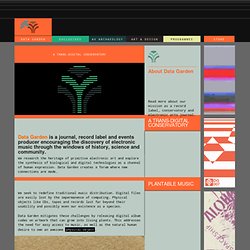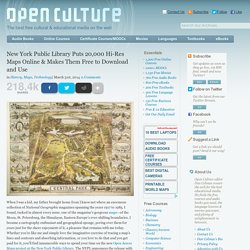

Science Shows How Drummers' Brains Are Actually Different From Everybody Elses' In the music world, drummer jokes are always popular.

Most of them have the same punchline: Drummers are idiots. Take, for example, the following: "How do you tell if the stage is level? The drummer is drooling from both sides of his mouth. " Whether it's being ruthlessly mocked for their idiocy, repeatedly killed in This Is Spinal Tap or just lusted after less often than the lead guitarist (whom we've already studied), drummers walk a tough road. But it turns out science holds them in really high regard: They have a rare, innate ability to problem-solve and change those around them. For starters, rock steady drummers can actually be smarter than their less rhythmically-focused bandmates.
But even though a steady drummer may be more intelligent than his or her bandmates, the drummer's gifts can be shared: a tight beat can actually transfer that natural intelligence to others. Data Science Ontology. A Trans-Digital Conservatory. Data Garden is a journal, record label and events producer encouraging the discovery of electronic music through the windows of history, science and community.

We research the heritage of primitive electronic art and explore the synthesis of biological and digital technologies as a channel of human expression. Data Garden creates a forum where new connections are made. We seek to redefine traditional music distribution. Digital files are easily lost by the impermanence of computing. Physical objects like CDs, tapes and records last far beyond their usability and possibly even our existence as a species. Data Garden mitigates these challenges by releasing digital album codes on artwork that can grow into living plants. Contact ░░ contact@datagarden.org General queries. demos ░░ demo@datagarden.org Please send us a link to your music. licensing ░░ licensing@datagarden.org Need music for film or television?
Press inquires. Diffusion Science radio: Podcast Index Archives. Mariko Mori: ‘There are two kinds of light – one invisible’ Japanese artist Mariko Mori, photographed at the Royal Academy by Antonio Olmos for the Observer New Review. This article titled “Mariko Mori: ‘There are two kinds of light – one invisible’” was written by Kate Kellaway, for The Observer on Sunday 9th December 2012 00.05 UTC Mariko Mori is dressed in the spirit of her work. If you look closely at her austere white outfit, you can see a trace of glitter in its fabric – like stardust.
She is one of Japan’s leading artists and this is her first solo exhibition in London for 14 years. Elegant Mathematical Formulas Activate the Same Brain Region As Music And Art. Beauty, they say, is in the eye of the beholder, and neurobiology, it turns out, supports this idiom. While some people might be moved by the beauty of an artistic or musical work, others experience the same ecstasy when gazing upon an elegant set of mathematical equations, new research finds. And, all these experiences activate the same part of the brain. Mathematicians have long described having "an emotional experience" when working with a particularly refined set of equations, authors of the new study told Medical Daily. But no one knew if they were having the same neurobiological experiences as people describing similar emotional reactions to what we generally describe as "art. " The research team recruited 15 mathematicians to look at 60 different equations while having their brains scanned in an fMRI.
Hear sonifications of brain connectivity in Austin, Texas March 4. New York Public Library Puts 20,000 Hi-Res Maps Online & Makes Them Free to Download and Use. When I was a kid, my father brought home from I know not where an enormous collection of National Geographic magazines spanning the years 1917 to 1985.

I found, tucked in almost every issue, one of the magazine’s gorgeous maps—of the Moon, St. Petersburg, the Himalayas, Eastern Europe’s ever-shifting boundaries. I became a cartography enthusiast and geographical sponge, poring over them for years just for the sheer enjoyment of it, a pleasure that remains with me today. Whether you’re like me and simply love the imaginative exercise of tracing a map’s lines and contours and absorbing information, or you love to do that and you get paid for it, you’ll find innumerable ways to spend your time on the new Open Access Maps project at the New York Public Library. Jim Ruxton: My Open Science presentation at the Subtle Technologies Festival – Confessions of a Science Libraria. Jim Campbell: Portfolio: Installations: Last Day In The Beginning Of March. Dimensions Variable. 26 light bulbs, custom electronics, speakers, sound.

Last Day in the Beginning of March is a rhythmic narrative, a poem, chronicling the last day of the life of the artist’s brother. This work is a large room-sized installation which consists of twenty-six light bulbs suspended from the ceiling and shining onto the floor below, each creating a circular pool of light. Each light bulb is connected to an electronic circuit which contains a fictionalized electronic ‘memory’ of a specific event and which modulates the brightness of each light according to the rhythm of that specific encoded memory. The small electronic chassis which contains the memory is placed near its modulated pool of light.